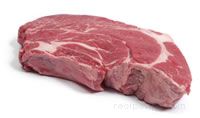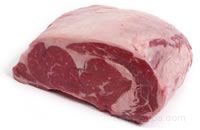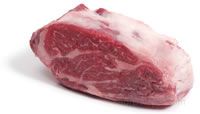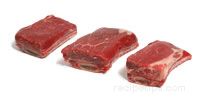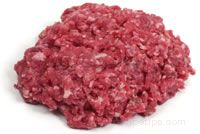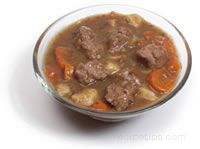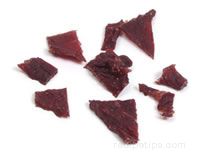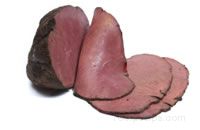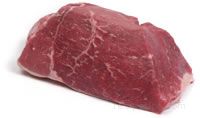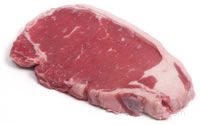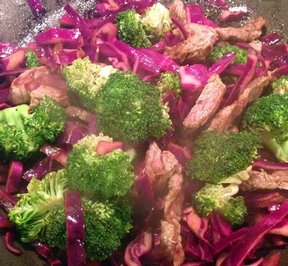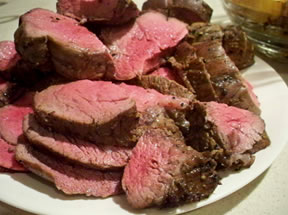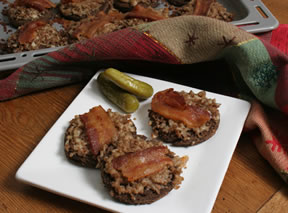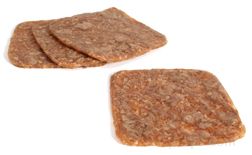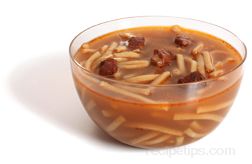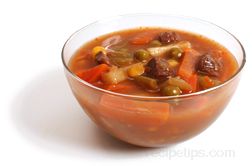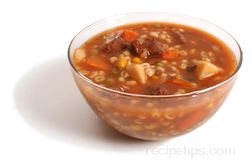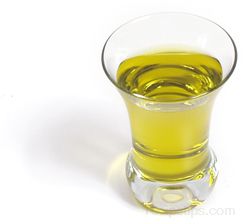Comparison of Various Cuts of Beef with Chicken | Miscellaneous Nutritional Tips
|
Concerns over saturated fat and cholesterol have caused many people to reduce or eliminate their consumption of beef and other meats, but beef can be part of a healthy, low fat, low cholesterol diet. When lean cuts are selected and low fat cooking methods are used, beef can be a very healthy part of the diet. The leanest cuts of beef have the words "loin" or "round" contained within the description such as tenderloin, eye of round, or top round. Low fat cooking methods include broiling, baking, roasting, grilling, steaming, stewing, and braising. |
|
About half the fat in beef is monounsaturated which is the same healthy type of fat found in olive oil. The monounsaturated fatty acids found in beef can help decrease the LDL (bad) cholesterol in the blood and help to increase the HDL (good) cholesterol. The leanest cuts of beef have an average of 70 to 80 mg. of cholesterol. Some cuts have even less than this. The top loin, for example, has 65 mg. of cholesterol and the eye round has only 60 mg. This compares very well to a skinless chicken breast which has 70 mg. of cholesterol per 3 ounce serving. It is recommended that no more than 300 mg. of cholesterol per day should be consumed, so 2 or 3 servings of lean beef per day allows plenty of room before reaching the maximum recommended level.
|
Comparison of Various Cuts of Beef with Chicken
All values in the table below are based on a comparison between a 3
ounce portion of skinless chicken breast and a 3 ounce portion of beef (about
the size of a deck of cards) that has been cooked with the excess fat removed.
| Chicken Breast |
Various |
120 |
1.5 |
0.5 |
70 |
24 |
| Cut of Beef | Cooking Method |
Calories |
Total Fat (grams) |
Saturated Fat (grams) |
Cholesterol (milligrams) |
Protein (grams) |
| Eye Round |
Roasted | 140 | 4.2 | 1.5 | 60 | 25 |
| Top Round |
Broiled | 150 | 4.2 | 1.4 | 70 | 27 |
| Round Tip |
Roasted | 160 | 5.9 | 2.1 | 70 | 24 |
| Top Sirloin |
Broiled | 170 | 6.1 | 2.4 | 75 | 26 |
| Bottom Round |
Braised | 180 | 6.3 | 2.1 | 80 | 27 |
| Top Loin |
Broiled | 180 | 8.0 | 3.1 | 65 | 24 |
| Beef Tenderloin |
Broiled | 180 | 8.5 | 3.2 | 70 | 24 |
| Rib Steak |
Broiled | 190 | 10.0 | 4.0 | 70 | 24 |
| Chuck Blade Roast |
Braised | 210 | 11.0 | 4.0 | 90 | 26 |
| Ground Beef 90% Lean |
Various | 210 | 11.0 | 4.0 | 85 | 27 |
Miscellaneous Nutritional Tips
|

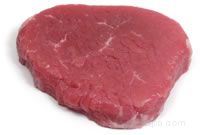




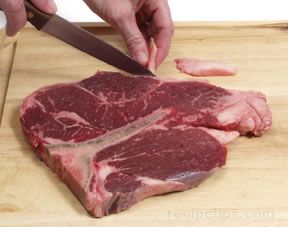 As with any type of meat, trimming excess fat from beef is essential in reducing saturated fat and cholesterol from the diet. However, doing this before the meat is cooked can make the meat tougher and less flavorful, especially if it is broiled, roasted, or grilled. Trimming the remaining fat after cooking will eliminate some of the saturated fat and cholesterol, but some of it will have melted into the meat during the cooking process, acting as a natural tenderizer. In some cases, you may have to decide if the elimination of as much of the fat as possible before cooking is more important than enjoying the optimum flavor and tenderness that results from the inclusion of the fat. The bottom line is that moderation is the key when enjoying any type of food and that it is important to include all of the essential food groups in a well balanced diet.
As with any type of meat, trimming excess fat from beef is essential in reducing saturated fat and cholesterol from the diet. However, doing this before the meat is cooked can make the meat tougher and less flavorful, especially if it is broiled, roasted, or grilled. Trimming the remaining fat after cooking will eliminate some of the saturated fat and cholesterol, but some of it will have melted into the meat during the cooking process, acting as a natural tenderizer. In some cases, you may have to decide if the elimination of as much of the fat as possible before cooking is more important than enjoying the optimum flavor and tenderness that results from the inclusion of the fat. The bottom line is that moderation is the key when enjoying any type of food and that it is important to include all of the essential food groups in a well balanced diet.
